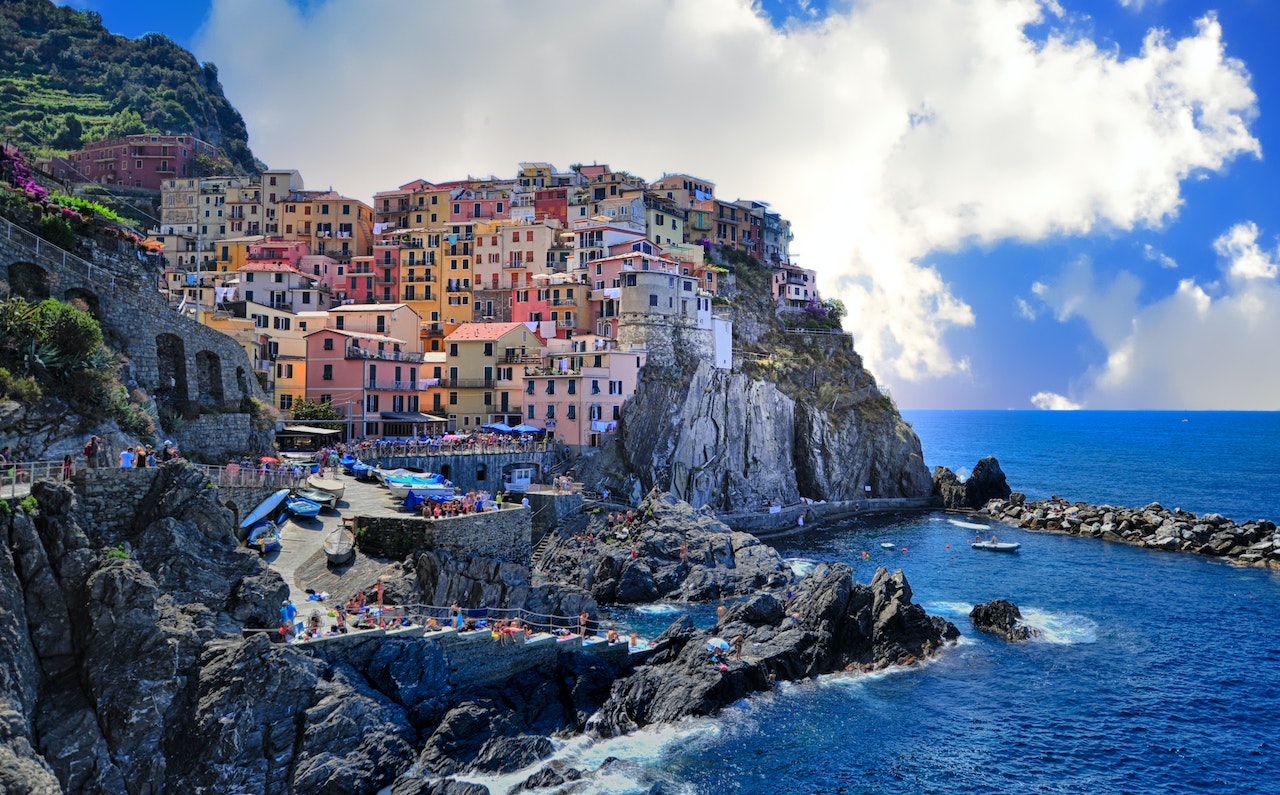The Role Of Architects In Shaping National Identity And Cultural Heritage
The role of architects in shaping national identity and cultural heritage has the potential to impact our society in many various ways. From designing iconic landmarks to preserving historic buildings, architects help to create and maintain the physical environment that reflects a nation's history, values, and aspirations.
Author:George EvansMar 29, 2023106.6K Shares1.6M Views

The role of architects in shaping national identity and cultural heritagehas the potential to impact our society in many various ways. From designing iconic landmarks to preserving historic buildings, architects help to create and maintain the physical environment that reflects a nation's history, values, and aspirations.
In this article, we will explore how architects influence national identity and cultural heritage, and the challenges they face in doing so.
The Role Of Architects In Shaping National Identity And Cultural Heritage
Architecture plays a vital role in shaping a country's national identity and cultural heritage. Architects are responsible for designing buildings and structures that reflect a society's unique cultural values, history, and identity.
The way buildings and structures are designed can have a significant impact on how people perceive their country and culture.
Defining National Identity
National identity refers to a sense of belonging or attachment to a particular country, its culture, and its values. It is often shaped by a shared history, language, and customs.
National identity is not a fixed concept, but rather a dynamic one that evolves. Architects can play a significant role in shaping national identity by designing buildings and structures that reflect a country's unique cultural heritage and values.
Architecture And Cultural Heritage
Architecture is an essential component of a country's cultural heritage. Buildings and structures are not just functional objects, but they also embody the history, traditions, and values of a society.
Architects who work on preservation projects help to safeguard a country's cultural heritage by protecting historic buildings and structures from damage or destruction.
They also work to restore and renovate historic buildings to ensure that they continue to serve their original purpose while maintaining their historical significance.
Preserving cultural heritage can be challenging, particularly in countries with rapidly developing economies.
In many cases, there is pressure to tear down historic buildings and replace them with modern structures that are more functional or visually appealing.
Architects who are committed to preserving cultural heritage must navigate this tension between the past and the present, seeking to strike a balance between tradition and innovation.
Iconic Landmarks
One of the most visible ways in which architects shape national identity is through the design of iconic landmarks.
These buildings and structures often become symbols of a country's identity and cultural heritage, attracting tourists from around the world. Examples of such landmarks include the Eiffel Tower in Paris, the Taj Mahal in India, and the Sydney Opera House in Australia.
The design of these buildings is often a reflection of a country's unique cultural heritage and values. The Eiffel Tower, for example, was designed by Gustave Eiffel as a monument to the industrial revolution and France's technological prowess.
The Taj Mahal, on the other hand, was built as a mausoleum to honor the memory of a beloved queen. Architects who work on these projects must be able to capture the essence of a country's identity and translate it into a visually compelling design.
Challenges Faced By Architects
Architects who work on projects that involve national identity and cultural heritage face several challenges. One of the most significant challenges is balancing the need for preservation with the need for modernization.
In many cases, historic buildings and structures are in a state of disrepair and require extensive renovations to bring them up to modern standards. However, modernization efforts can often be at odds with the historic character of a building, leading to debates over the appropriate level of intervention.
Another challenge faced by architects is navigating the political landscape surrounding national identity and cultural heritage.
Governments may be hesitant to invest in preservation projects if they are seen as too expensive or not politically advantageous. Additionally, debates over what constitutes a country's cultural heritage can be contentious, particularly in countries with diverse populations or a history of colonization.
The Importance Of National Identity In Architecture
National identity is an essential aspect of a country's cultural heritage. It refers to the shared sense of belonging, attachment, and pride that people have for their country, and it is often shaped by a country's history, language, customs, traditions, and values.
Architecture is an integral component of national identity, as it reflects a country's cultural heritage and values through the design of buildings and structures.
Architects who work on projects that involve national identity must be able to capture the essence of a country's identity and translate it into a visually compelling design.
They must consider the historical, cultural, and social contexts of the country and its people and create designs that reflect those contexts. For example, a country with a rich history of art and architecture might seek to incorporate those elements into its modern buildings to reinforce its cultural identity.
The Relationship Between Architecture And Cultural Heritage
Cultural heritage refers to the tangible and intangible artifacts, structures, and traditions that are passed down from one generation to the next. Architecture is an essential component of cultural heritage, as it reflects the history, culture, and values of a society.
Architects who work on preservation projects help to safeguard a country's cultural heritage by protecting historic buildings and structures from damage or destruction.
However, preserving cultural heritage can be challenging, particularly in countries with rapidly developing economies. In many cases, there is pressure to tear down historic buildings and replace them with modern structures that are more functional or visually appealing.
Architects who are committed to preserving cultural heritage must navigate this tension between the past and the present, seeking to strike a balance between tradition and innovation.

The Relevance of Cultural Heritage: Identity
Preserving Cultural Heritage - Challenges And Opportunities
Preserving cultural heritage is crucial for maintaining a society's unique identity and history. However, the task of preserving cultural heritage can be challenging due to various factors.
One of the significant challenges is the lack of funding and resources, as preservation projects can be costly and time-consuming. Another challenge is the threat of natural disasters, such as earthquakes, floods, or fires, which can damage or destroy historic buildings and structures.
People Also Ask
What Challenges Do Architects Face In Preserving Cultural Heritage?
Architects face challenges in balancing the need for preservation with the need for modernization and navigating the political landscape surrounding national identity and cultural heritage.
How Do Architects Balance Preservation And Modernization In Their Designs?
Architects balance preservation and modernization by finding ways to integrate modern technologies and materials into historic structures while preserving their historical significance.
What Is The Role Of Governments In Preserving Cultural Heritage?
Governments play a critical role in preserving cultural heritage by providing funding and support for preservation projects and passing laws and regulations to protect historic buildings and structures.
What Is The Future Of National Identity And Cultural Heritage In Architecture?
The future of national identity and cultural heritage in architecture depends on architects' ability to balance preservation and modernization while navigating the political landscape surrounding these issues. It also depends on governments' willingness to prioritize and invest in preservation efforts.
Conclusion
The role of architects in shaping national identity and cultural heritage is crucial for designing iconic landmarks to preserving historic buildings, architects help to create and maintain the physical environment that reflects a nation's history, values, and aspirations.
Despite the challenges they face, architects who are committed to preserving cultural heritage can help to ensure that future generations will be able to appreciate and learn from the architectural achievements of the past.
Jump to
The Role Of Architects In Shaping National Identity And Cultural Heritage
Defining National Identity
Architecture And Cultural Heritage
Iconic Landmarks
Challenges Faced By Architects
The Importance Of National Identity In Architecture
The Relationship Between Architecture And Cultural Heritage
Preserving Cultural Heritage - Challenges And Opportunities
People Also Ask
Conclusion

George Evans
Author
George Anderson, an exceptional architectural designer, envisions and brings to life structures that transcend the realm of imagination. With an unwavering passion for design and an innate eye for detail, George seamlessly blends form and function, creating immersive spaces that inspire awe.
Driven by a deep appreciation for the interplay of space, light, and materials, George's innovative approach redefines the possibilities of architectural design. His visionary compositions leave an indelible mark, evoking a sense of wonder and transforming the built environment.
George Anderson's transformative designs and unwavering dedication continue to shape the architectural landscape, pushing the boundaries of what is possible and inspiring generations to come.
Latest Articles
Popular Articles